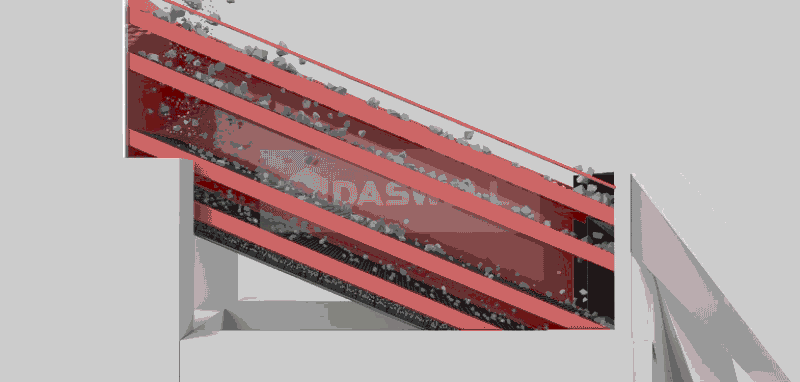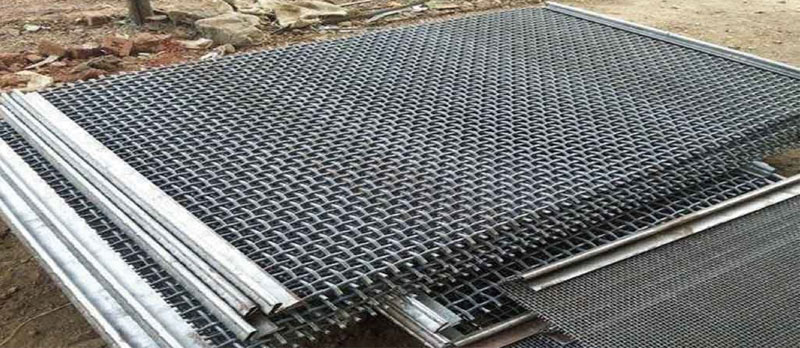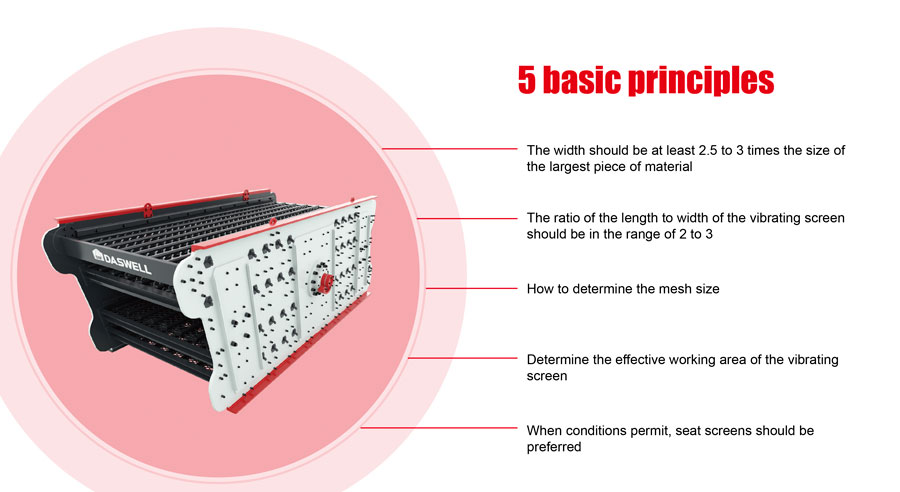Screening is an indispensable part in the sand and gravel aggregate production line. As an important screening equipment, the efficiency of vibrating screen directly affects the economic efficiency of sand production line. Therefore, it is very important to choose the right vibrating screen.

There are many types and models of vibrating screens on the market today, and many people don't know how to choose. So what factors should be considered when choosing a vibrating screen?
There are four main factors to consider when choosing a vibrating screen, as follows.
1.Characteristics of the screened material
When selecting a vibrating screen, the characteristics of the screened material should be considered, including the properties of the material, the content of the particle size of the finished material, the moisture content of the material, the shape and specific gravity of the material, and the content of clay.
Among them, the properties of materials include their chemical properties and physical properties. Physical specific gravity, viscosity, whether there is static electricity, whether it is fragile, etc. are all issues that need to be considered. Generally speaking, materials with light specific gravity, stickiness, static electricity and easy clumping have a very high risk of blocking during the screening process. So it is even more necessary to choose a suitable vibrating screen.
2.The structure of the vibrating screen
When selecting a vibrating screen, factors such as the screen area and layers of the vibrating screen, the shape and size of the screen hole, the material of the screen, and the movement mode, vibration frequency and amplitude of the vibrating screen should also be considered.

Sieving output
Artificial sand is produced by the sand production line, which requires the screening output of the selected vibrating screen to be adapted to the output of the whole production line. The screening efficiency of a vibrating screen is directly related to the effective screening area of the equipment. The larger the effective screening area, the higher the screening efficiency of the vibrating screen.
Screen layers
The number of layers of the screen generally depends on how many sizes of finished material the customer needs. If the customer needs four kinds of finished materials, then the screen should choose three layers. Because two layers of vibrating screen can produce three kinds of finished materials, and three layers of vibrating screen can produce four kinds of finished materials. The common sizes of finished materials are 0-5mm, 5-10mm, 10-20mm and 20-40mm.

Durability of the screen
The raw materials of crushing and screening production line are generally various kinds of stones. They are generally more abrasive, so the screen needs to have high wear resistance.
The screen frame of the vibrating screen should choose a more durable steel frame, and use a thicker and more wear-resistant high-strength steel screen according to the production needs of the user. This kind of screen has high strength, rigidity and bearing capacity, and its service life can be increased by 4~8 times. It is suitable for crushing industries with large specific gravity, large output and large particles.
3.Different screening uses
In the crushing and screening production line, the common types of vibrating screens are: circular vibrating screen, linear vibrating screen, probability screen, etc.

According to different screening applications, different types of vibrating screens need to be selected, such as:
If the raw material needs to be pre-screened, generally a circular vibrating screen is used;
For classification and screening of crushed materials, large vibrating screens, circular vibrating screens, etc. are often used;
It is better to choose linear vibrating screen for dehydration and dehydration treatment of materials;
If it is necessary to desilt and remove sand from the material, probability screens are often used.
4.Requirements for beneficiation process
When choosing a vibrating screen, we should also pay attention to the requirements of the beneficiation process. According to the processing capacity of the production line, screening methods and other comprehensive consideration, choose the appropriate screen surface, screen hole shape and screen size, which can improve the screening effect on sand and gravel materials.
Research shows that the larger the screen size, the greater the fineness modulus of the produced artificial sand, the lower the stone powder content; the smaller the screen size, the smaller the fineness modulus of the produced artificial sand, and the greater the stone powder content.

In addition, the capacity of the equipment should be suitable for the output required by the project. Excessive production will waste capital investment, and overloaded operation will cause wear and tear on equipment and reduce production capacity. Choosing a vibrating screen with a suitable production capacity can reduce unnecessary waste of funds.
In addition to considering the above four factors, the following basic principles should also be observed:

1. After determining the screening area, the width of the screen surface should be at least 2.5 to 3 times the size of the largest piece of material to prevent the vibrating screen from being blocked by large pieces of material.
2. In order for the vibrating screen to be in a good working condition, the ratio of the length to the width of the vibrating screen should be in the range of 2 to 3.
3. How to determine the size of the sieve hole.
If it is used for fine particle size material sieving, its sieve hole size is 2 to 2.2 times of the separation size, the maximum does not exceed 3 times;
If it is used for medium particle size material screening, its sieve hole size is 1.2 times of the separation particle size;
If it is used for coarse particle size material screening, the sieve hole size is 1.05 of the separation particle size;
For the probability sieve, the sieve hole size is generally 2 to 2.5 times of the actual separation size.
4. Determine the effective working area of the vibrating screen. The screening area calculated according to the requirements of the production process is the effective area of the vibrating screen, and the specification of the vibrating screen is its nominal area. For vibrating screens used for screening medium-sized materials, the effective screening area should be 0.8 to 0.85 times the nominal area of the screen. Of course, this is closely related to the opening ratio of the sieve holes on the sieve surface.
5. When conditions permit, seat type screens should be preferred to facilitate inspection and maintenance. When the hanging type screen must be selected, the lifting height should be reduced as much as possible to reduce the swing range of the vibrating screen and facilitate production operations.
When choosing screening equipment, you should not only consider one reason, but fully consider various factors to ensure that you choose the equipment suitable for your project.
